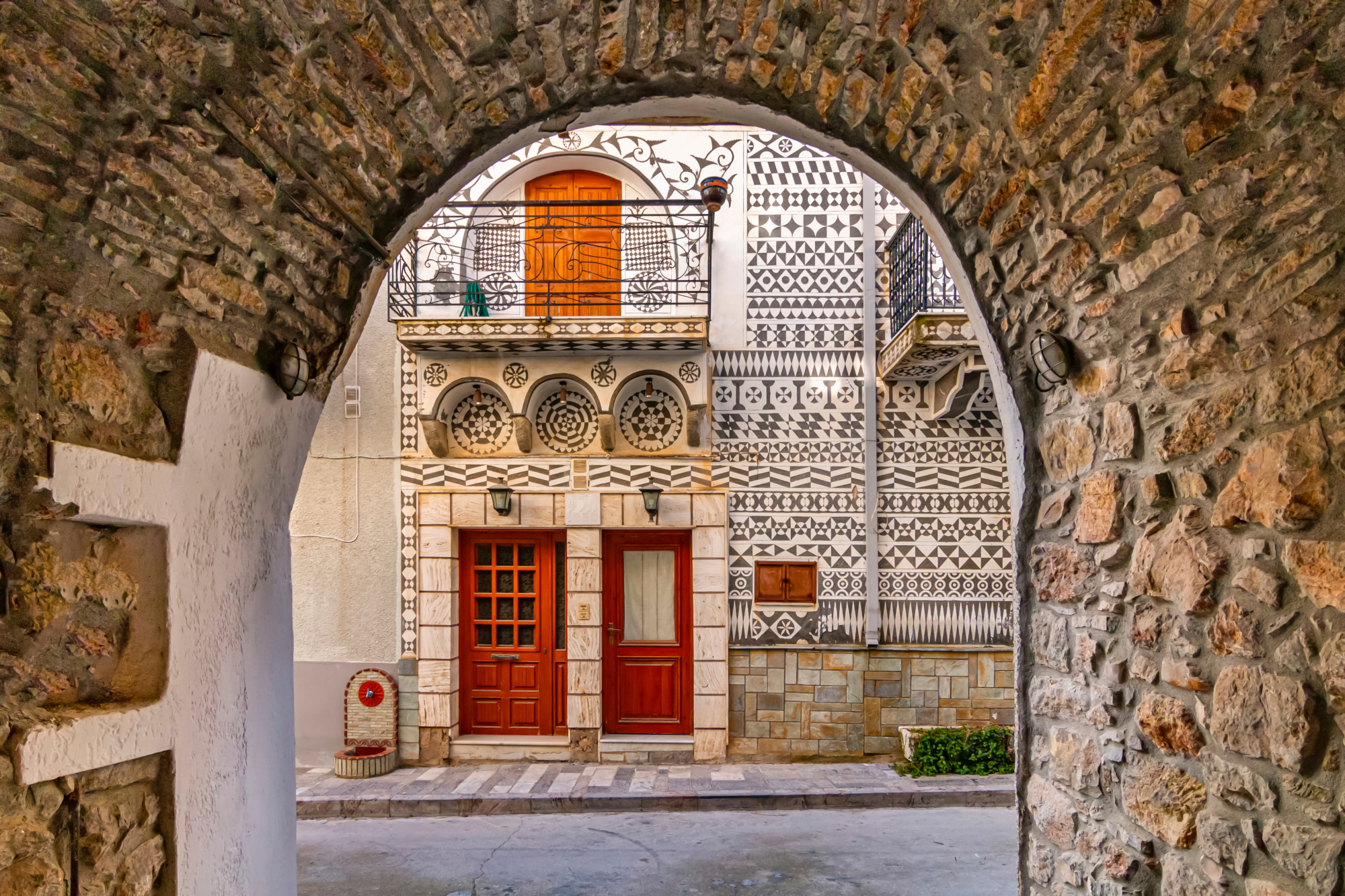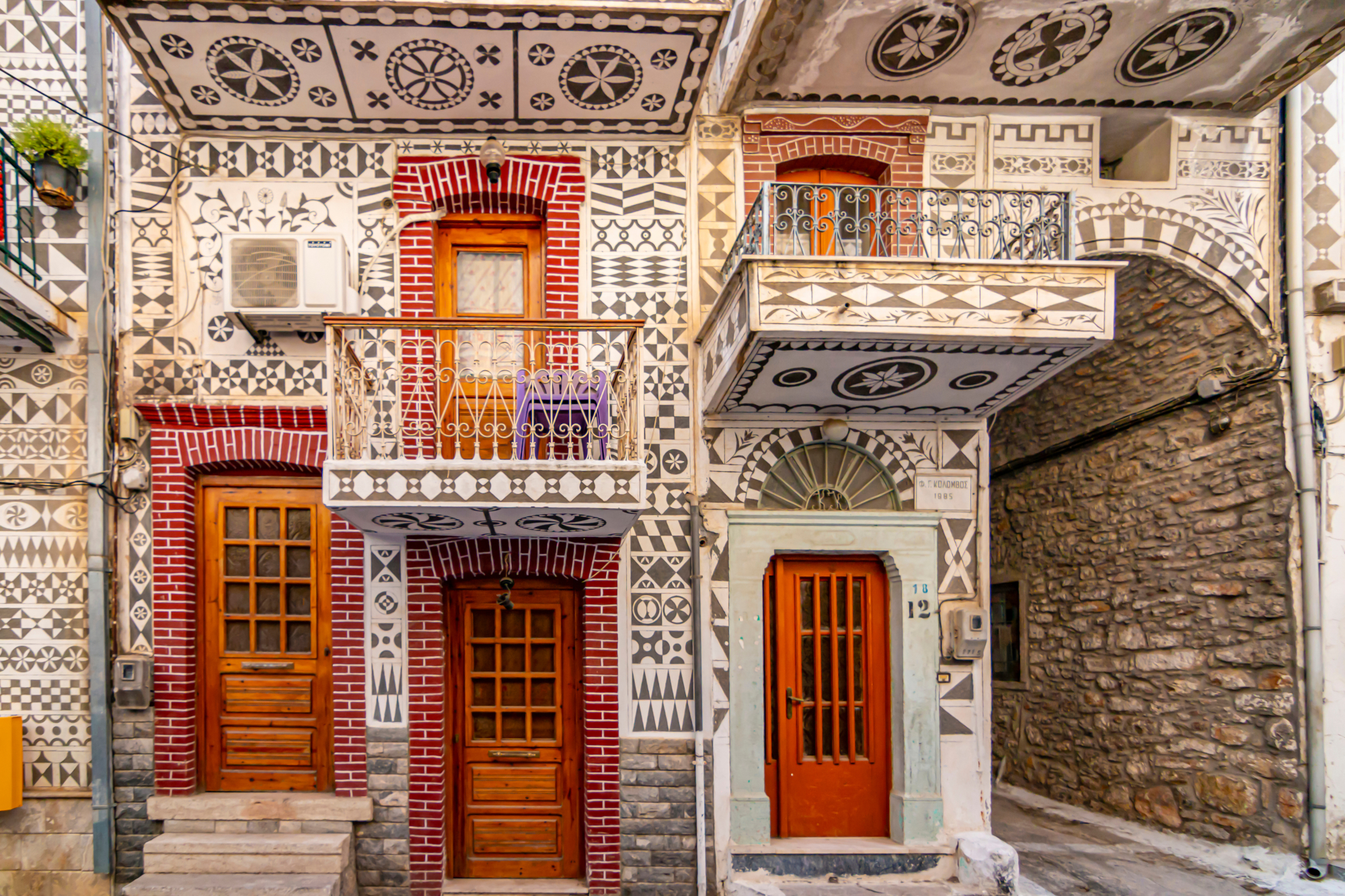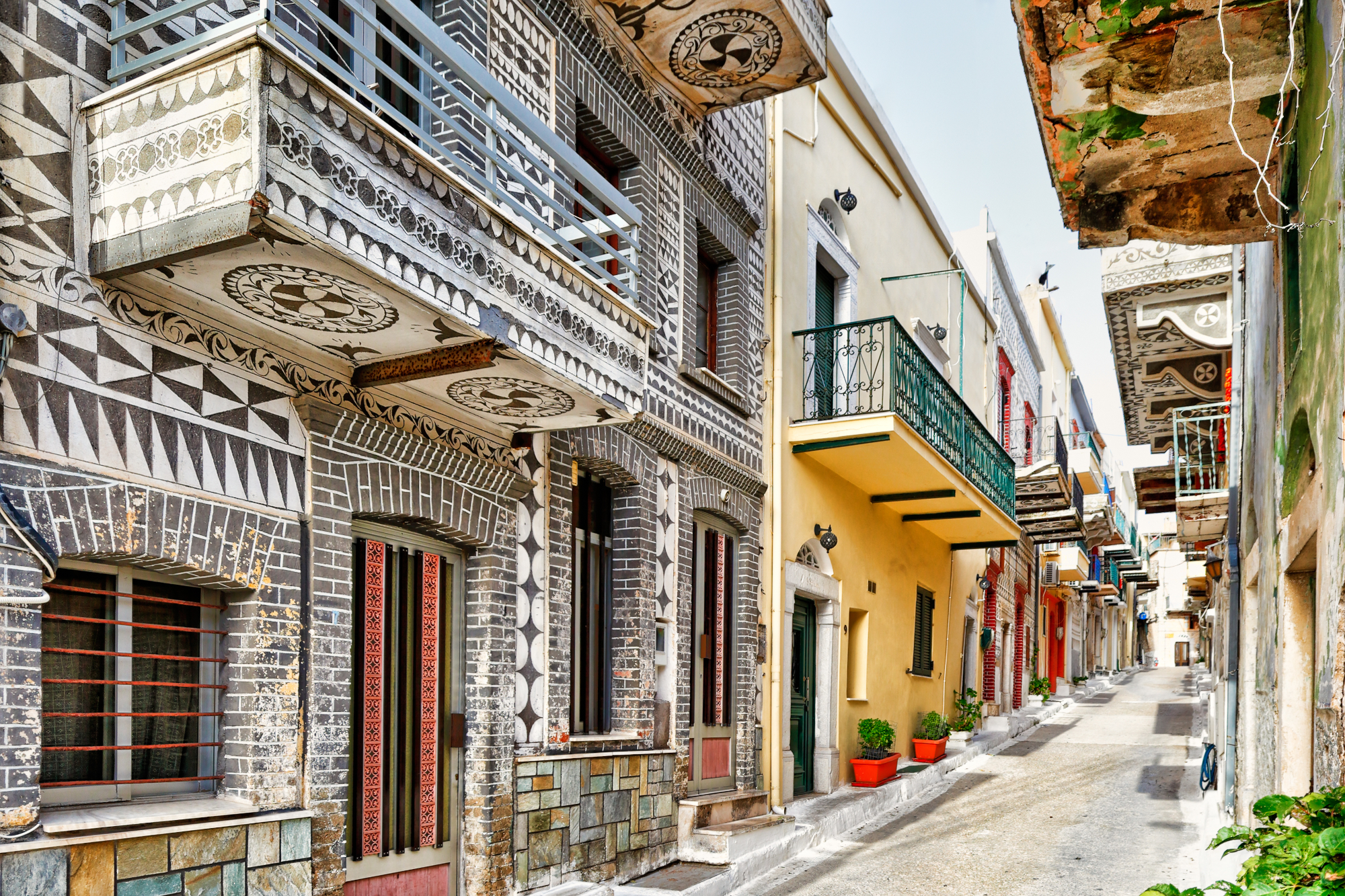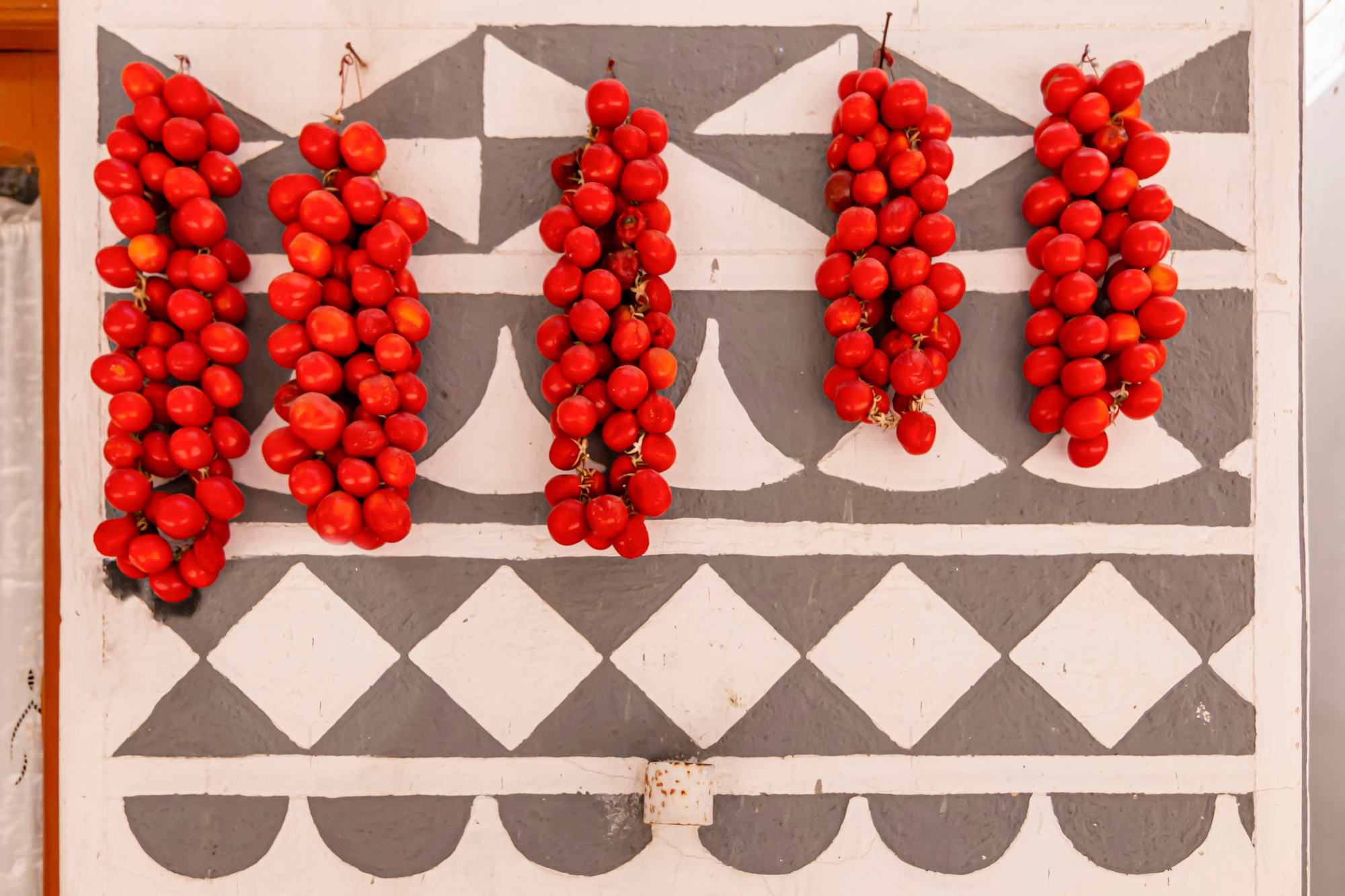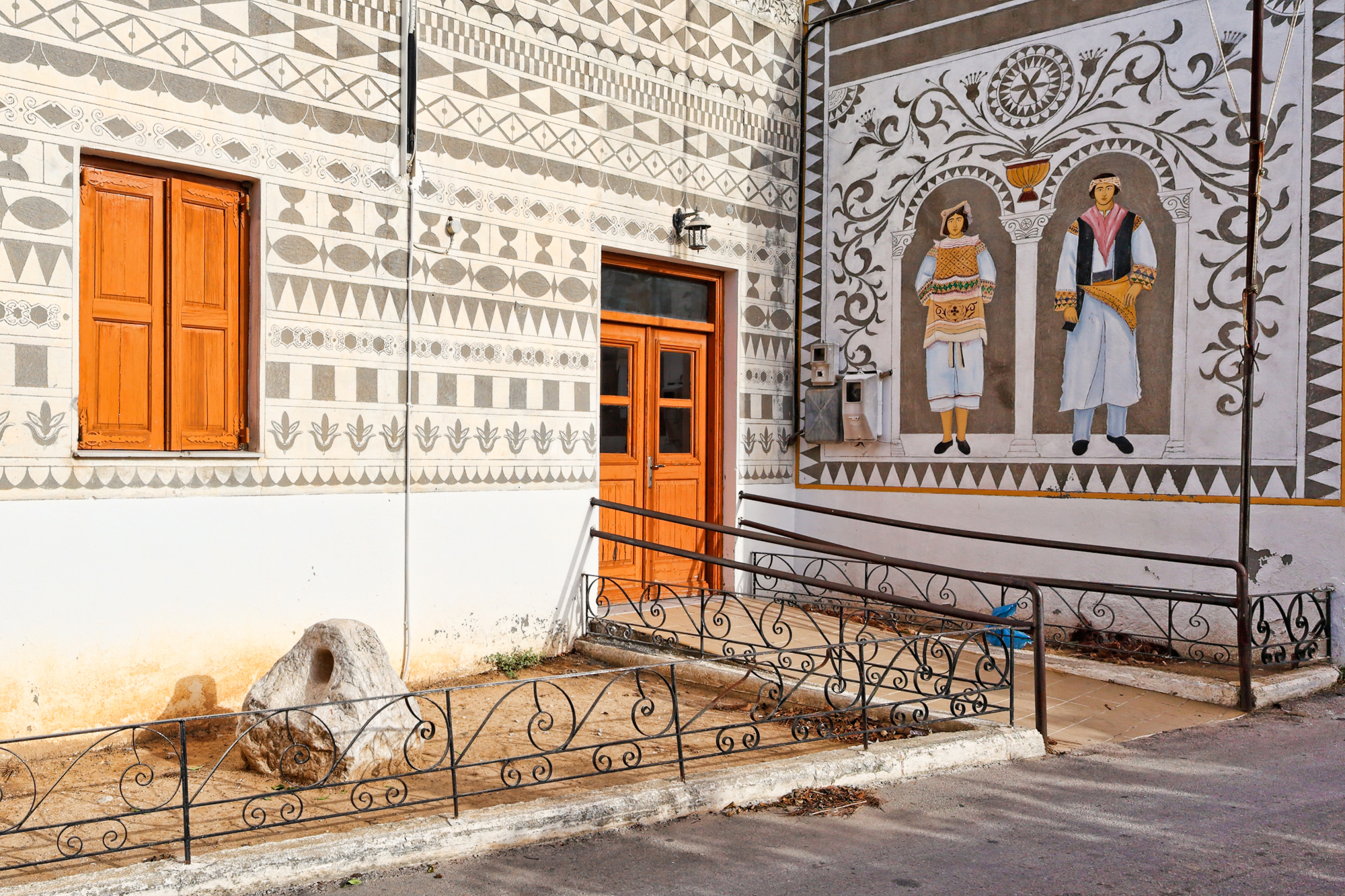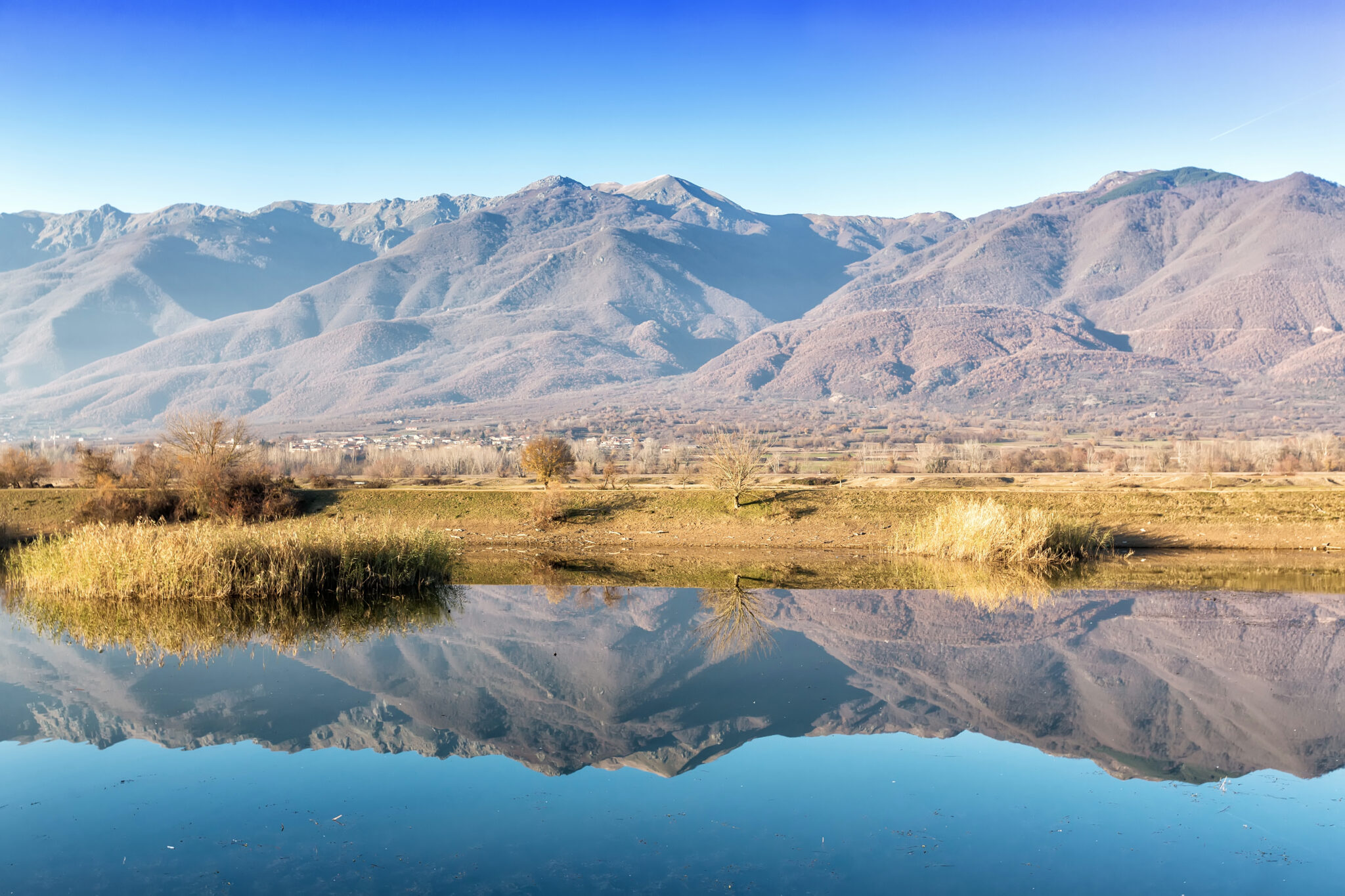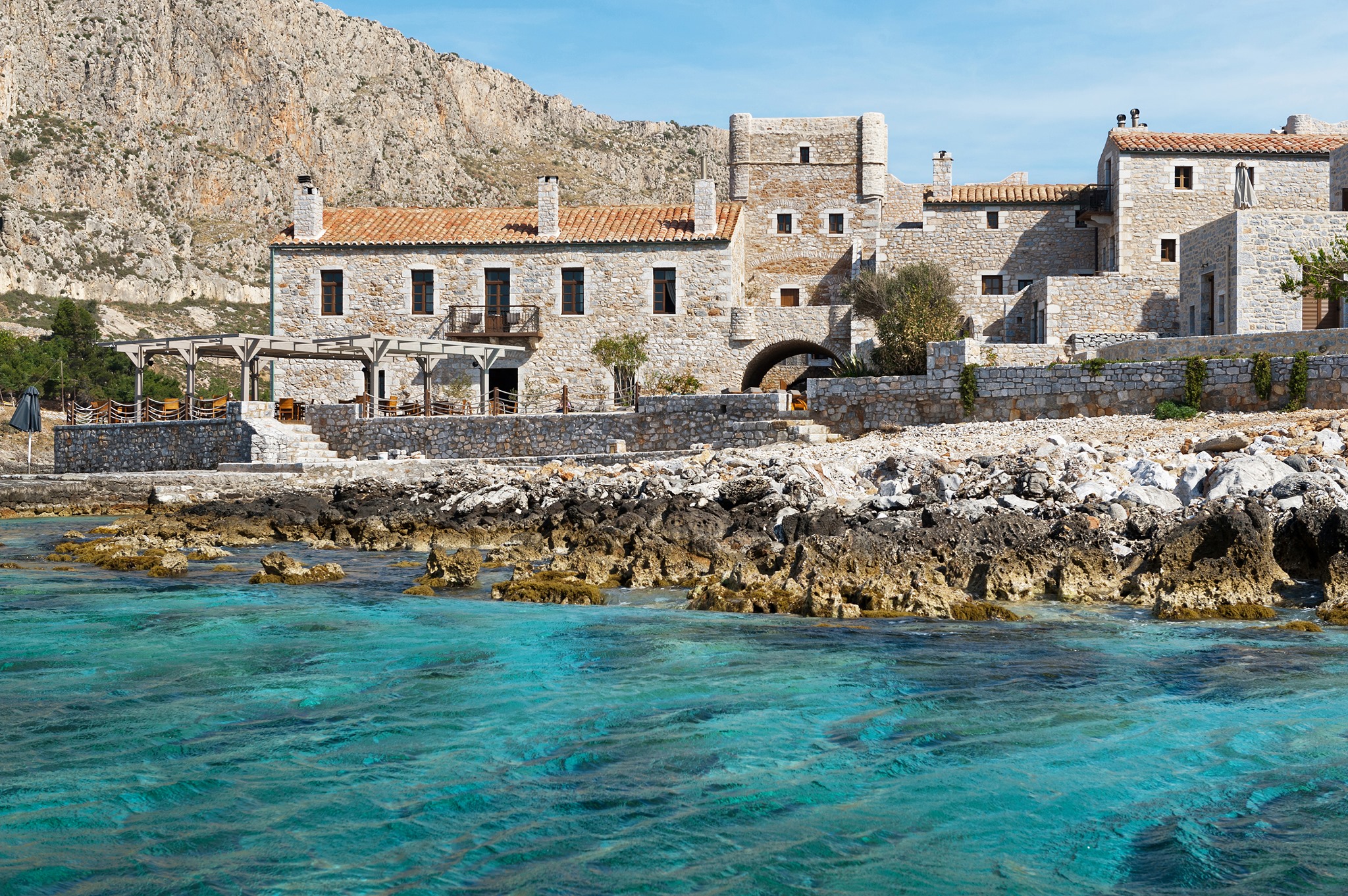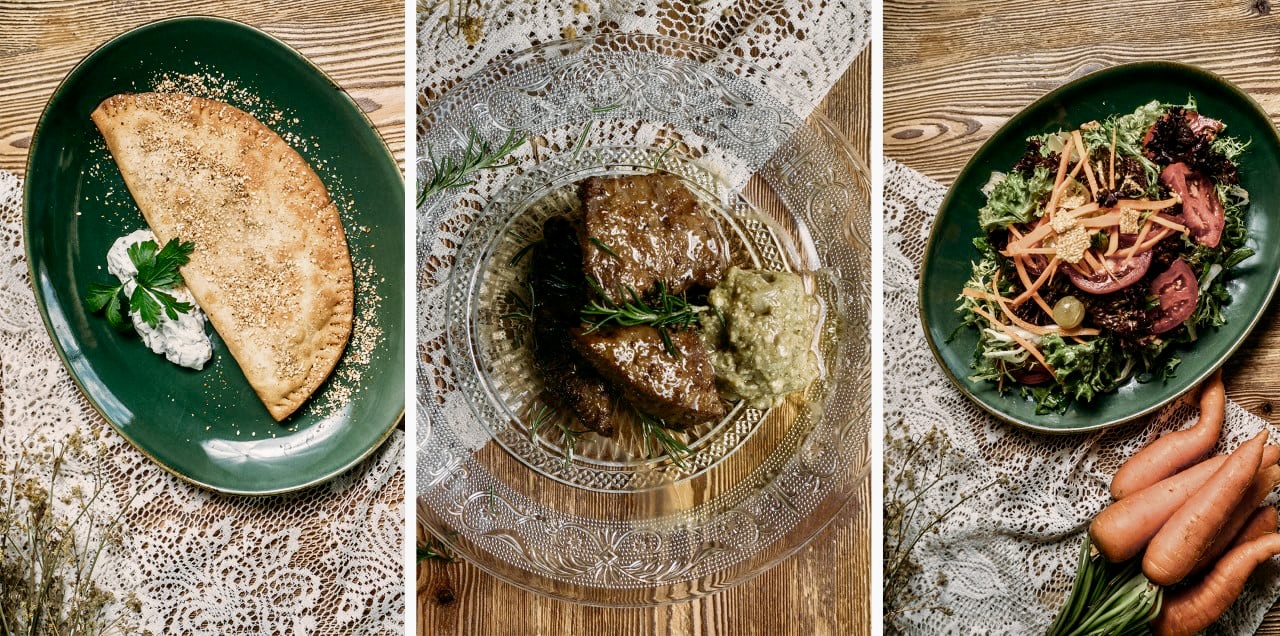It could have been an outdoors Art space. A constant pattern of geometrical shapes that covers every surface, every wall, every house balcony. This mastic producing village of Chios could be compared to an elaborate optical illusion. The beauty of the land and of the buildings is unique.
Pyrgi is just 25 kilometres away from the town of Chios, something that makes it a must destination for someone visiting the island. It’s a medieval village where the people of the surrounding settlements gathered in the 13th century under orders of the Serenissima Repubblica di Genova that had conquered the place. As the Environmental Education Centre of Chios mentions, in order for the Genoese conquerors to organise and fortify the mastic producing settlements from attacks, and also to control the production, they united the old and scattered Byzantine settlements under one umbrella.
The village’s tower, that was built during the Genoese era, was surrounded by a thick square wall.
A distinct feature of the village, unique to it and not found anywhere else in Greece, is its decoration. The patterns are also known as “ksista” (scratched surfaces). They are geometric decorations scratched on the plaster that covers the exterior of every house. This technique is based on the black sand in the coating, on which, after it is whitewashed, patterns are scratched, resulting in black shapes on a white background. It is said that the origin of this technique is Italian, brought to the island by the Genoese, during their long occupation of the island.
Pyrgi still resists time and human interventions managing to remain, to this day, a medieval monument. The village’s structure and architecture are impressive, and of great historical interest. Its fortification layout managed to keep it safe from many enemy raids.
The most important church in Pyrgi is Agioi Apostoloi, it is an exceptionally well-preserved Byzantine monument of the 14th century, a reproduction of the Katholikon of Nea Moni. Other churches in the village are the church of Theotokos, of Taxiarchis, of Ypapanti, of Agia Paraskevi, of Agios Georgios and of Agios Stefanos.
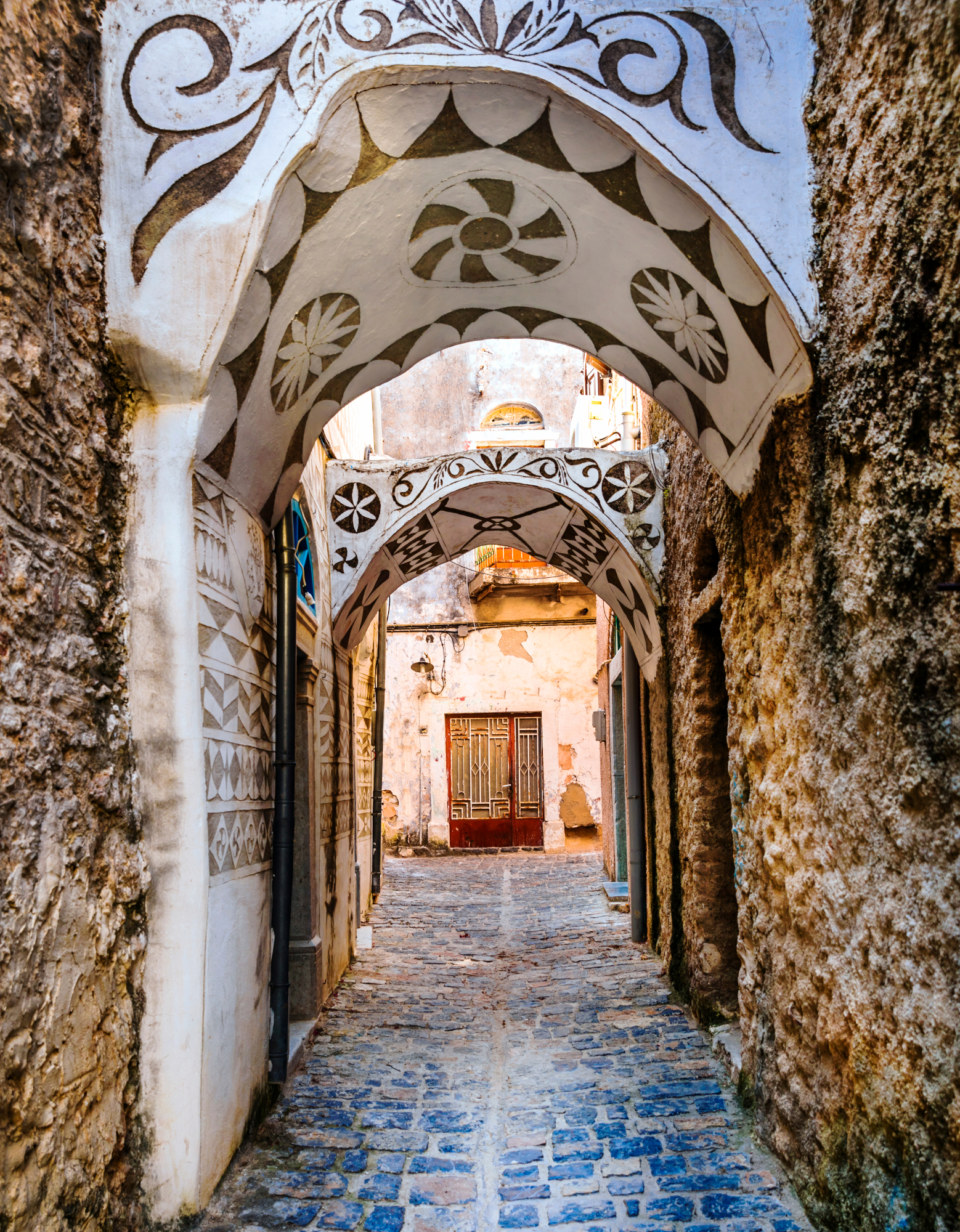
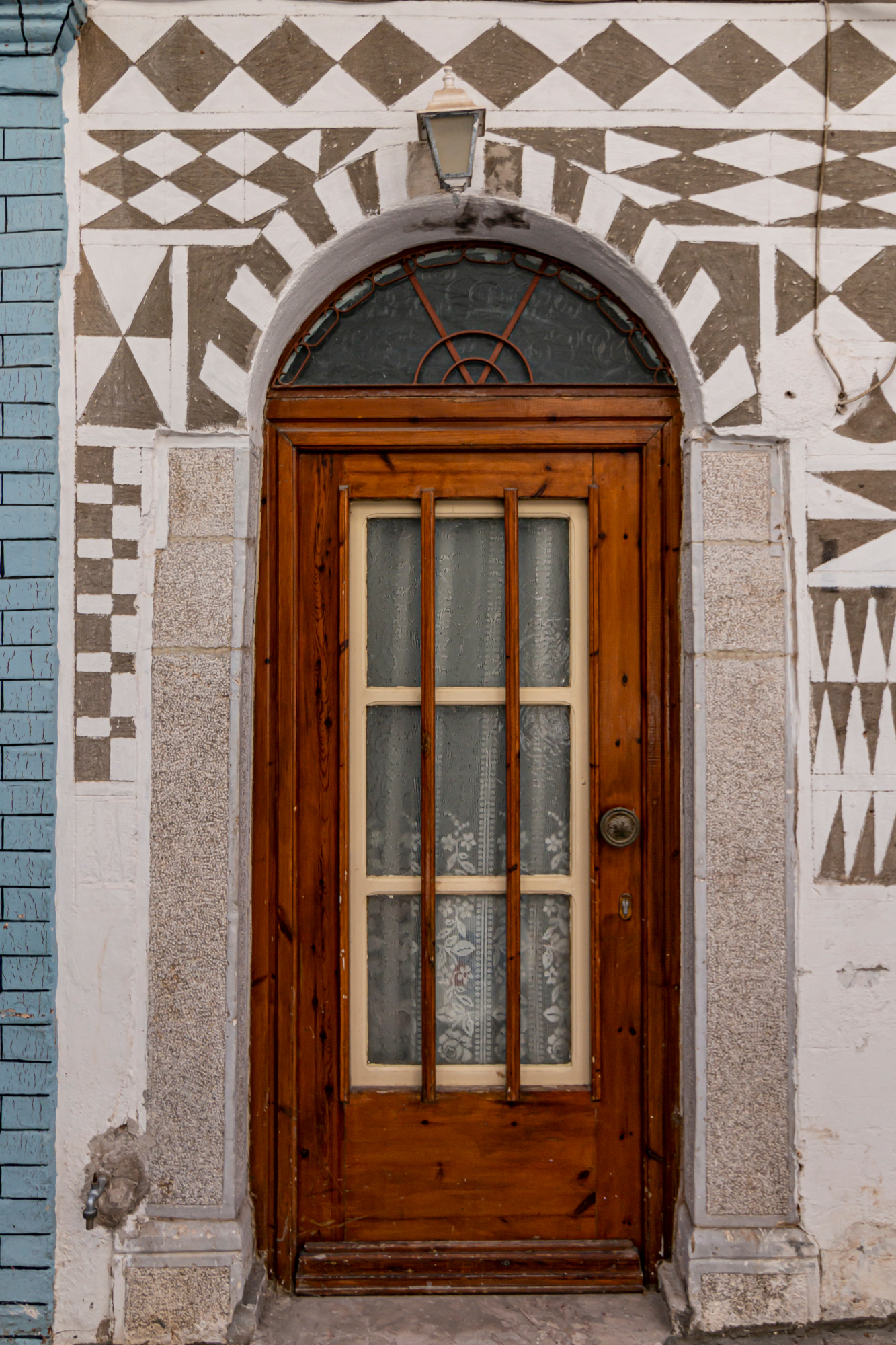
Most houses in Pyrgi have three or four storeys, with high ceilings and are larger than the houses in the medieval settlements. The ground floor consists of two or three adjoining rooms, where there is the staircase that leads to the first floor which consists of two or three rooms and a sunroom.
“It seems that the kitchen was the place where the family gathered, with the cooking fire in the middle. Around it, young and old men chatted, while the women of the house sewed and embroidered… the sleeping quarters were on the mezzanine with the wooden floors in the “inner house”, and they remained cool in the summer and warm in the winter. Animals, animal feed and agricultural tools were kept, as they are today, on the ground floor, in the barn. The smaller and larger arched balconies are another characteristic of the houses of Pyrgi…they used the mastic that wasn’t suitable for selling as incense, and the house was lit with four-wick lamps, while the richer houses had oil lamps, that were used at celebrations and weddings. All the furniture was made from carved tree branches and the clothes were made with the loom” Nikos Gialouris writes in “The Mastic Villages”.
So, a visit to Pyrgi will not only reward you with the most beautiful photographs of your summer but will make you feel like part of its history.



